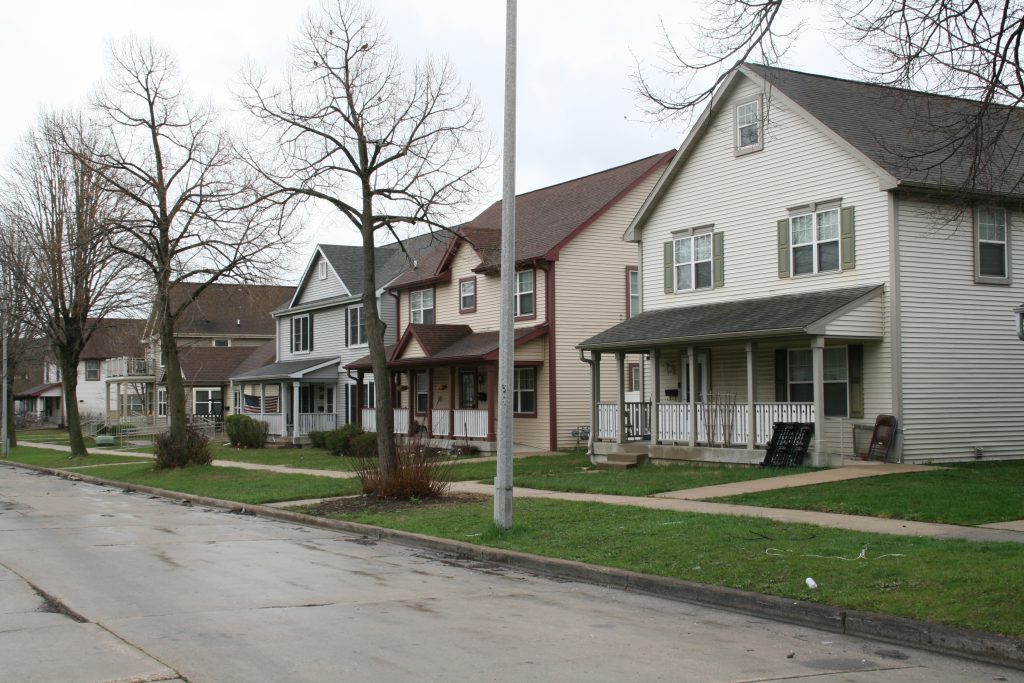Milwaukee Officials, Climate Advocates Praise Clean Energy Projects
Biden's $2.55 billion Clean Energy Plan funding projects in Wisconsin.
Current and former elected officials joined residents, workers union members and climate organizers in Milwaukee County on Friday to raise awareness about new pathways now open to homeowners to access clean and renewable energy. Mayor Cavalier Johnson joined County Executive David Crowley, former Lt. Gov. Mandela Barnes, Green Homeowners United (GHU) union worker Warren Kirby, and others to announce new opportunities for green policies to take root in Milwaukee.
The officials and press gathered outside the home of Milwaukee resident Danny Miller, who received $12,000 through a federal tax benefit program for energy efficiency for attic insulation, air sealing, and basement sealing work. “The Affordable Clean Energy Plan can help with energy efficient appliances and home improvements that save energy and reduce costs,” Johnson said at the event. “I encourage homeowners in Milwaukee to take a look at all of these available opportunities. There is money waiting for you to tap into.”
“The clean energy movement is here,” said County Executive Crowley. Residents and workers can access tax credits, rebates, and benefits to help build a local clean energy economy through President Joe Biden’s Affordable Clean Energy Plan, he added. “These efforts will also help save Wisconsin households thousands of dollars through energy efficiency upgrades.” One of the Biden Administration’s climate policies is reducing energy costs for families nationwide. The clean energy plan included $1.8 billion in investments in low-income homes, hundreds of millions in weatherization grants, and $750 million to support energy efficiency and resilience for the nation’s housing sector.
Milwaukee has a set of local climate goals including reducing local greenhouse emissions 45% by 2030 and achieving net zero emissions by 2050. Local officials also hope to build a new workforce in green energy jobs, particularly for minority neighborhoods which have been historically neglected by the government. Ensuring that home energy upgrades are more affordable is another one of those goals. Replacing sections of the decrepit city housing and empty lots with new, low-carbon footprint homes is another goal in the city’s Climate and Equity Plan. The plan also “envisions supporting a new factory in Milwaukee that constructs modular housing components year-round to both reduce the cost of new home construction and restore manufacturing job opportunities for people of color.” Other goals include creating more electric transportation, building a green energy grid, restoring nature areas within the city while protecting those which remain and re-designing waste reduction.
Former Lt. Gov. Barnes praised Milwaukee’s moves towards renewable energy. “With the clean energy transition, we have the opportunity to usher in an inclusive economic boom for the first time in our nation’s history,” said Barnes. “Families and homeowners can and should be at the heart of this economic boom. If we want to reach our goal of 100% carbon-free electricity by 2035 in our state, we must continue to make our homes greener and more energy-efficient.” Kevin Kane, chief economist for GHU also highlighted the importance of the advancements. “Thanks to the Affordable Clean Energy Plan, families can take advantage of new tax credits that support our mission and line of work. Homeowners can now access tax credits that cover 30% of home improvements that reduce energy leakage, and upgrade heating and cooling equipment. Families who add insulation to attics, basements, and more can receive a tax credit up to $1,200.”
Adapting to climate change is an ever more pressing issue for local governments. Late last summer, Milwaukee endured blistering heatwaves along with many parts of the globe. High temperatures pushed local schools to close for multiple days. Wildfires burned large swaths of land in other parts of the state. During the summer of 2022, a series of storms in Milwaukee downed hundreds of trees, causing flooding which resulted in the death of a young boy. The storms were part of a rash of severe weather that broke out across the Midwest that summer.
A recent study by the University of Western Australia, Indiana State University and the University of Puerto Rico-Mayagüez suggests that temperatures across the globe may have already far exceeded thresholds set by the Paris Agreement, limiting global warming to no more than 2 degrees Celsius in order to avert catastrophic changes in weather.
Milwaukee officials, climate advocates praise clean energy, efficiency investments was originally published by Wisconsin Examiner.
Political Contributions Tracker
Displaying political contributions between people mentioned in this story. Learn more.
- August 13, 2015 - Cavalier Johnson received $25 from David Crowley






















